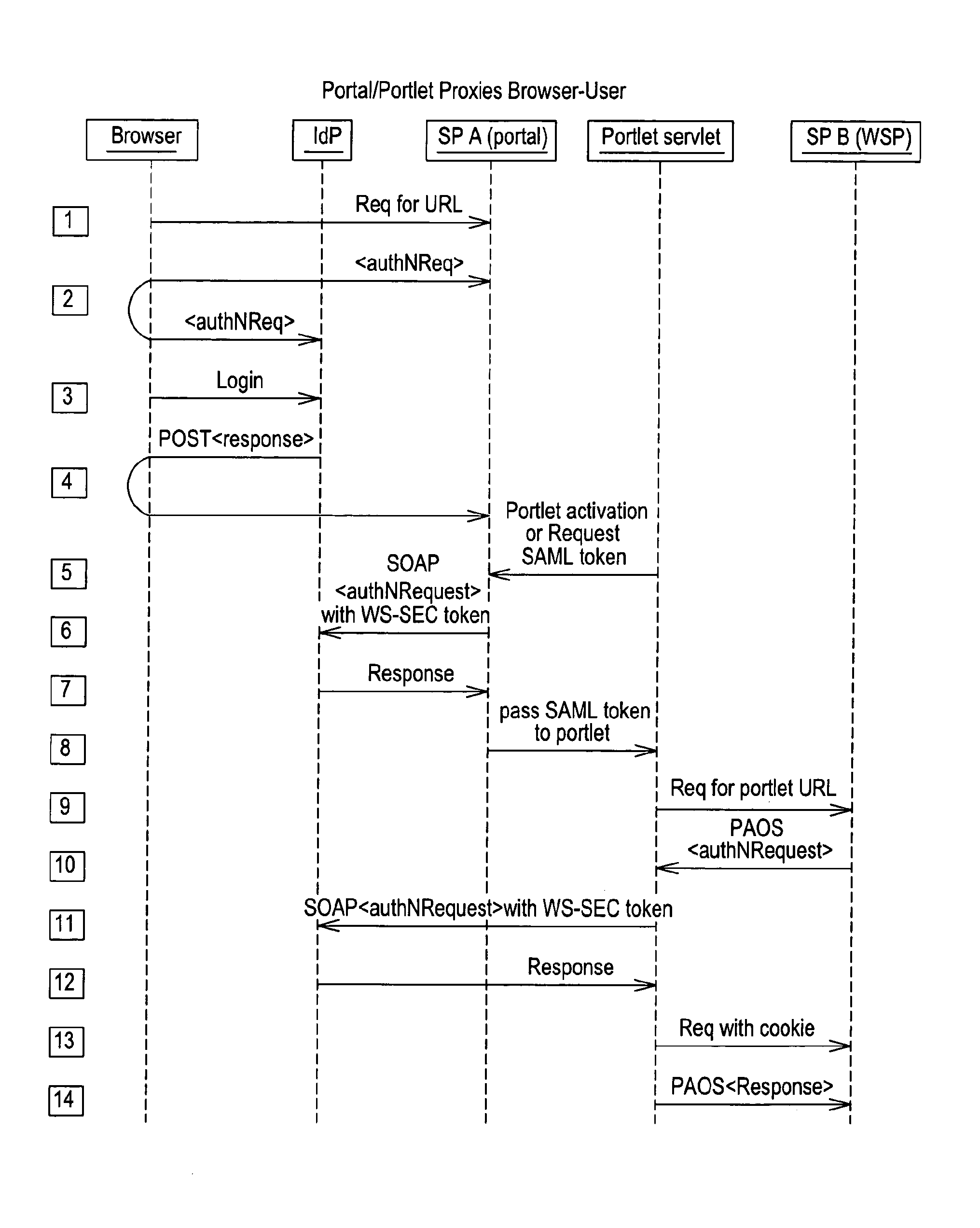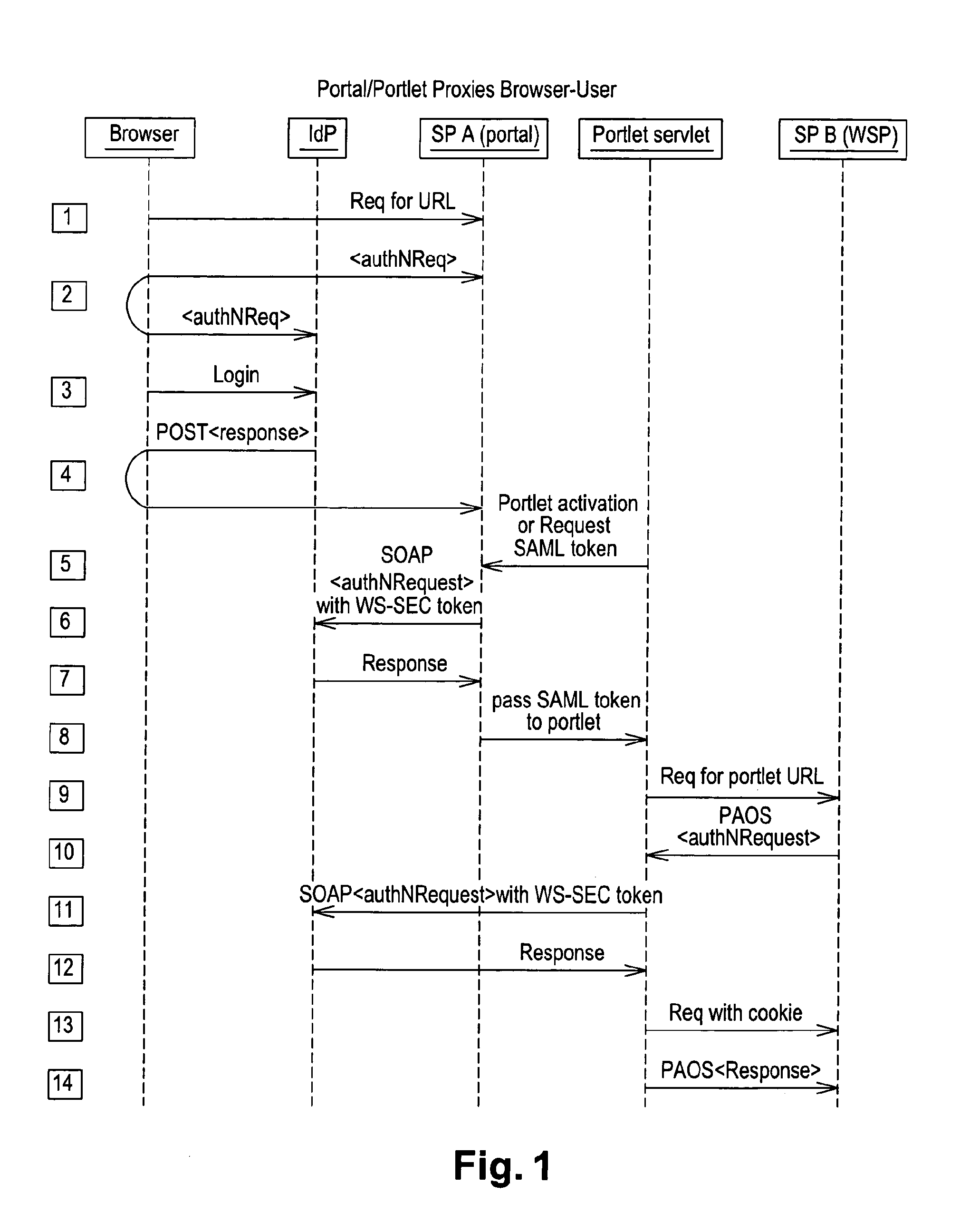User to user delegation service in a federated identity management environment
a federated identity management and user-to-user technology, applied in the field of delegation services, can solve the problems of not being able to establish the link between delegation and access control, oauth is designed for user-to-machine delegation, and not being suitable for user-to-user delegation
- Summary
- Abstract
- Description
- Claims
- Application Information
AI Technical Summary
Benefits of technology
Problems solved by technology
Method used
Image
Examples
first embodiment
[0061]In a first embodiment, service providers do not make changes or makes minimum change to use the delegation mechanism provided by the identity provider. This embodiment is only applicable to the discretionary access control and the delegator gives all of his privileges at the service provider to the delegatee for a specified period of time.
[0062]In this first embodiment in which the SP changes are not necessary, a delegator always delegates all his privileges to a delegatee at a service provider, that is, the delegator allows the delegatee to login to the service provider as the delegator. For example, the delegator can give his login credentials, such as username / password or smart card / PIN, to the delegatee at the SP.
[0063]In a delegation Assignment, the method comprises the following steps: the delegator authenticates to the IdP, specifies the delegatee, selects the SP that he wants the delegatee to access, and specifies other constraints, such as validation period. The IdP c...
second embodiment
[0070]In a second embodiment, the service provider can express its delegation policy or a subset of the policy inside the metadata. This embodiment is applicable to discretionary access control or simple role-based access control, with which the service provider can express the delegation policies without specifying individual users. The delegator can advantageously specify privileges that he wants to delegate. The service providers describe their delegation policies using XACML. For example the following XACML 3.0 code snippet illustrates a delegation policy wherein the SP is an online merchant, whose delegation policy says that any user who has an account at the SP can delegate the order tracking and award point tracking to anyone who can be authenticated by the IdP. The delegatee does not necessarily have an account at the SP.
Simple merchant delegation policy / / , are omitted for simplicity User Of IdP Category=”urn.oasis:names.tc:xacml:3.0:attribute...
third embodiment
[0085]In a third embodiment, the method is independent of the access control mechanism that a service provider has. A service provider can choose this option if it has a more complex role-based access control, a mandatory access control, or any access controls that are too complex or too sensitive to be expressed in the metadata with the IdP. For example, a SP's access control policies may bond to individuals and stored in a database. In these cases, either the delegator knows what he can delegate, or the delegator or the IdP must ask the service provider what the delegator can delegate. The SP must consult its access control engine in order to provide the list.
[0086]For the delegation assignment, a delegator wants to delegate some tasks to a delegatee, to be done at a SP. The IdP does not know what privileges that the delegator can delegate. The IdP's role is to manage the delegation and to tell the SP that the delegator indeed has delegated certain privileges to the delegatee. The...
PUM
 Login to View More
Login to View More Abstract
Description
Claims
Application Information
 Login to View More
Login to View More - R&D
- Intellectual Property
- Life Sciences
- Materials
- Tech Scout
- Unparalleled Data Quality
- Higher Quality Content
- 60% Fewer Hallucinations
Browse by: Latest US Patents, China's latest patents, Technical Efficacy Thesaurus, Application Domain, Technology Topic, Popular Technical Reports.
© 2025 PatSnap. All rights reserved.Legal|Privacy policy|Modern Slavery Act Transparency Statement|Sitemap|About US| Contact US: help@patsnap.com



